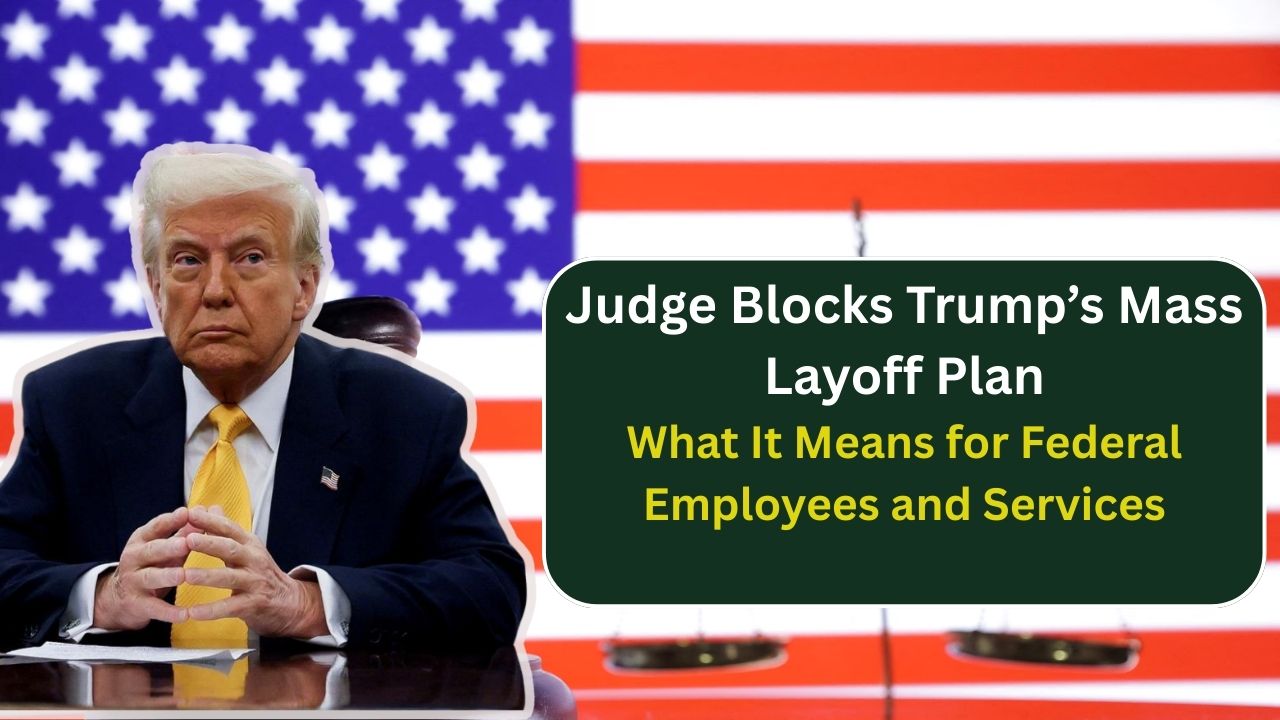In a major legal development, a federal judge has temporarily blocked former President Donald Trump’s sweeping plan to downsize numerous federal agencies, dealing a serious blow to his broader agenda of shrinking government operations.
On May 10, 2025, U.S. District Judge Susan Illston in San Francisco issued a 14-day temporary restraining order halting mass layoffs and structural changes planned by the Trump administration. The ruling responds to lawsuits filed by labor unions and city governments challenging the legality of the restructuring without congressional approval.
What Was the Plan?
The Trump administration’s downsizing initiative targeted thousands of federal employees across multiple departments. The administration framed the move as part of a cost-cutting and efficiency-driven strategy. Among the affected departments were:
- Health and Human Services
- Department of Agriculture
- Department of Energy
- Department of Labor
- Social Security Administration (SSA)
According to internal memos, the plan included layoffs, terminations of telework agreements, and potential agency closures. Reports had also confirmed over 3,000 federal employees had already exited, and thousands more were poised for reassignment or departure.
Why the Ruling Matters
Judge Illston ruled that such major reorganizations require congressional approval, not unilateral executive action. The restraining order halts further action pending court hearings on the lawsuits.
Plaintiffs argue that the administration bypassed essential legal procedures, threatening public service operations and violating administrative law. Cities that joined the lawsuit expressed concerns over delayed federal support, particularly in areas like healthcare, food aid, and social security services.
This isn’t the first ruling challenging Trump’s efforts. Just days earlier, another federal judge—John McConnell—blocked an executive order to dissolve three federal agencies. He emphasized that only Congress holds the power to create or eliminate federal departments, reinforcing the constitutional principle of separation of powers.

Government and Legal Reactions
The Trump administration responded by stating that the downsizing guidance was not an enforceable mandate, but rather a strategic recommendation. However, the judge disagreed, citing tangible effects such as personnel terminations and office closures.
Labor unions welcomed the ruling, calling it a “victory for democratic accountability.” “Federal workers are not pawns in a political game,” said the National Federation of Federal Employees in a statement. “This ruling ensures that changes go through the proper legal channels.”
Meanwhile, legal analysts say this could set a significant precedent for future executive actions on federal workforce management. “This case underscores the limits of executive power—even with broad political backing,” said law professor David Goldstein of Georgetown University.
What Comes Next?
The court will hold further hearings to determine whether a permanent injunction is warranted. If upheld, the ruling could stall or completely dismantle Trump’s downsizing blueprint, which is central to his second-term agenda.
For now, the restraining order ensures that no federal employee will be laid off under this plan until a full review is conducted. Additionally, public services tied to affected agencies are expected to continue operating normally—though some disruptions already reported, such as delays at SSA offices, remain a concern.
Broader Implications
This legal rebuke reveals a larger clash between the executive branch and judicial oversight. Trump’s attempts to streamline the federal government face mounting resistance—not only from Democrats and unions but also from judges emphasizing procedural integrity.
It also raises questions about the future of civil service protections and how far any president can go in unilaterally reshaping the federal workforce. As lawsuits progress, government employees and the public alike await more clarity on how this legal battle will reshape federal agency operations.
This article has been carefully fact-checked by our editorial team to ensure accuracy and eliminate any misleading information. We are committed to maintaining the highest standards of integrity in our content.

Outside of work, he enjoys playing chess, following cricket, and writing short stories. His commitment to integrity and in-depth analysis strengthens OTE News’ mission of providing trustworthy journalism.




